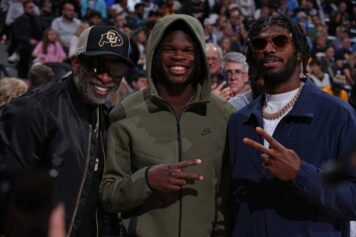Earlier this month, The Institute for Diversity and Ethics in Sports Director, human rights activist and educator Dr. Richard Lapchick, and DaWon Baker, released the 2015 Racial and Gender Report Card to the public, and neither was happy with the overall results.
The Shadow League spoke with Dr. Lapchick about his findings and he was still simmering. The study was a survey of senior leadership positions at major collegiate sports institutions as well as the NCAA itself. Lapchick said, College Sport maintained its overall B grade as well as its B for racial hiring practices and its C+ for gender hiring practices. There was a small improvement in gender and a small decrease for race.”
“Opportunities for coaches of color continued to be a significant area of concern in all divisions. For the 2015 season,87.1 percent of Division I,88.8 percent of Division II and 91.6 percent of Division III mens coaches were white. On the womens side, whites held 85.7 percent, 88.4 percent and 91.3 percent in Divisions I, II, and III, respectively,” he said.
Among the noticeable low lights of the study are;
The percentage of female presidents at the 128 FBS institutions was 12.5 percent, down from 15.1 percent in 2014.
89.9 percent (115) of FBS university presidents were white. There were six African-American presidents, four Asian presidents, and three Latino presidents. There were no Native-American university presidents.
The number of Athletics Directors of color at FBS schools decreased from 21 in 2014 to 17 in 2015. There were still no women of color in this position.
There were 112 (87.5 percent) white head football coaches to begin the 2015 season. The number of head football coaches of color at the FBS level increased from 14 in the 2014 report to 16 at the start of the 2015 season.
Thats the tip of a very big iceberg.
Its disappointing for someone who has been in higher education for the past 45 years that the leadership in college sports remains overwhelmingly white and overwhelmingly male, explained Dr. Lapchick. Compared to the major pro leagues in terms of racial hiring, college sports are way behind in their hiring practices. It was a disappointing to set of results.
The Shadow League: What are some steps that could be taken to alleviate this problem?
Richard Lapchick: I think the only alternative that major colleges have is to adopt what I call an Eddie Robinson Rule, named after the former Grambling State head coach that would require for all senior positions in our athletic departments as well as at NCAA headquarters that there be a diverse pool of candidates that includes women and people of color to be a part of the in-person interview process thats been successful in Major League Baseball and in the NFL in terms of improving things. I think nothing will really change at the college level without putting something in with teeth to make colleges open up their hiring processes.
TSL: What is the main thing you would like for our readership to glean from this report?
R.L.: I think that America has to find it unacceptable when nearly 90 percent of our head coaches across all three divisions in mens and womens athletics are white and more than 60 percent, including womens teams, are men. And more than 50 percent of the assistant coaches on womens teams are men. These statistics are just unacceptable in todays world.
The 2015 Racial and Gender Report Card not only observed hiring practices for athletic directors, head coaches and NCAA officials, but also surveyed the racial and gender composition of student-athletes as well. The uniformity in major college sports incorporating individuals of color into their programs remained largely unchanged as blacks still made up the majority of these athletes.
For more information on this study www.tidesport.com



